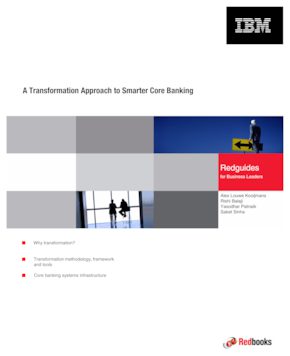Abstract
The extensive experience brought by IBM to core banking transformation indicates that the most successful transformation approach is a progressive one in which modernization is a process that incorporates flexibility and business acumen, and can adapt as requirements change.
Creating a componentized architecture that separates key constructs and their assets from the core transaction engine is a critical factor in achieving a successful transformation. Such a scenario makes the architecture the central concern and allows a bank to benefit from the necessary flexibility and efficiency. After the core architecture is established, the bank can address each requirement and modification on a case-by-case basis by choosing from custom and packaged options.
Further, the core transformation method outlined in this IBM® Redguide™ publication allows a bank to make deployment decisions based purely on business benefits by using a progressive program that delivers value at each step of the process, and every step can be tailored to keep pace as needs and requirements change. Finally, this method ensures that the overall transformation process remains in line with evolving business objectives.
Table of Contents
The case for core banking transformation
Core banking transformation process
Transformation methodology
Using a framework for transformation
Core banking systems infrastructure
Next steps
